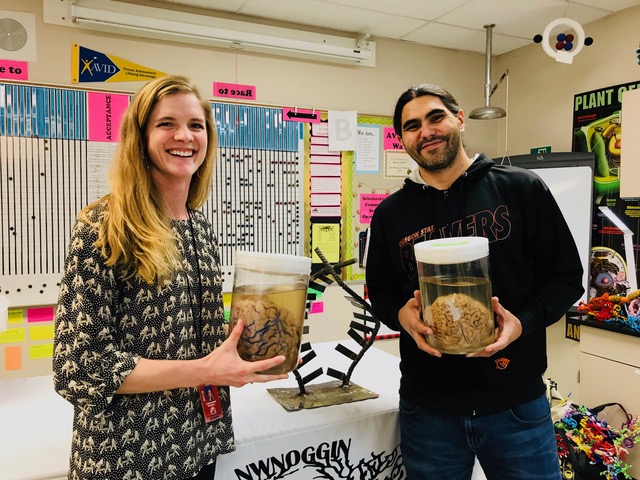Fort Vancouver High School, the diverse “Home of the Trappers,” is also home to some excellent science teachers, including Coreyanne Russell, Angela Fojtik, Andrew Wicklas, James Cederstrom and Ahran Jang. We’ve hosted their students at a Providence Brain Watch surgery, and their pipe cleaner neurons even hung at the Portland Art Museum for a Noggin presentation on the art and neuroscience of behavioral change..!
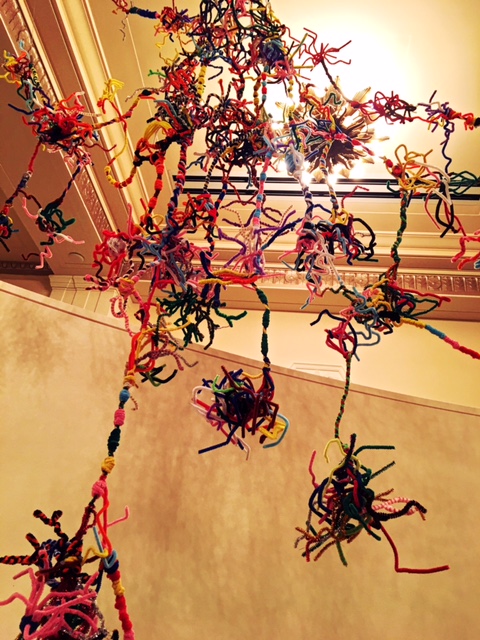
LEARN MORE: Ventricles in Vancouver!
LEARN MORE: A Brain Bonanza @ Fort Vancouver High!
LEARN MORE: Trapper Motivation: Learning about drugs and the brain
LEARN MORE: Frontal Lobes @ Fort
LEARN MORE: What will your students remember in five years?
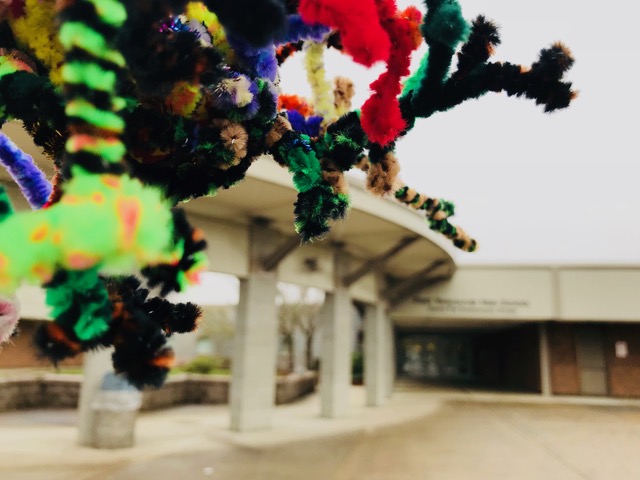
We returned this week for the first of four new visits, this time to introduce ourselves and take questions, and craft and consider the basic cellular units of brains: neurons and glia…
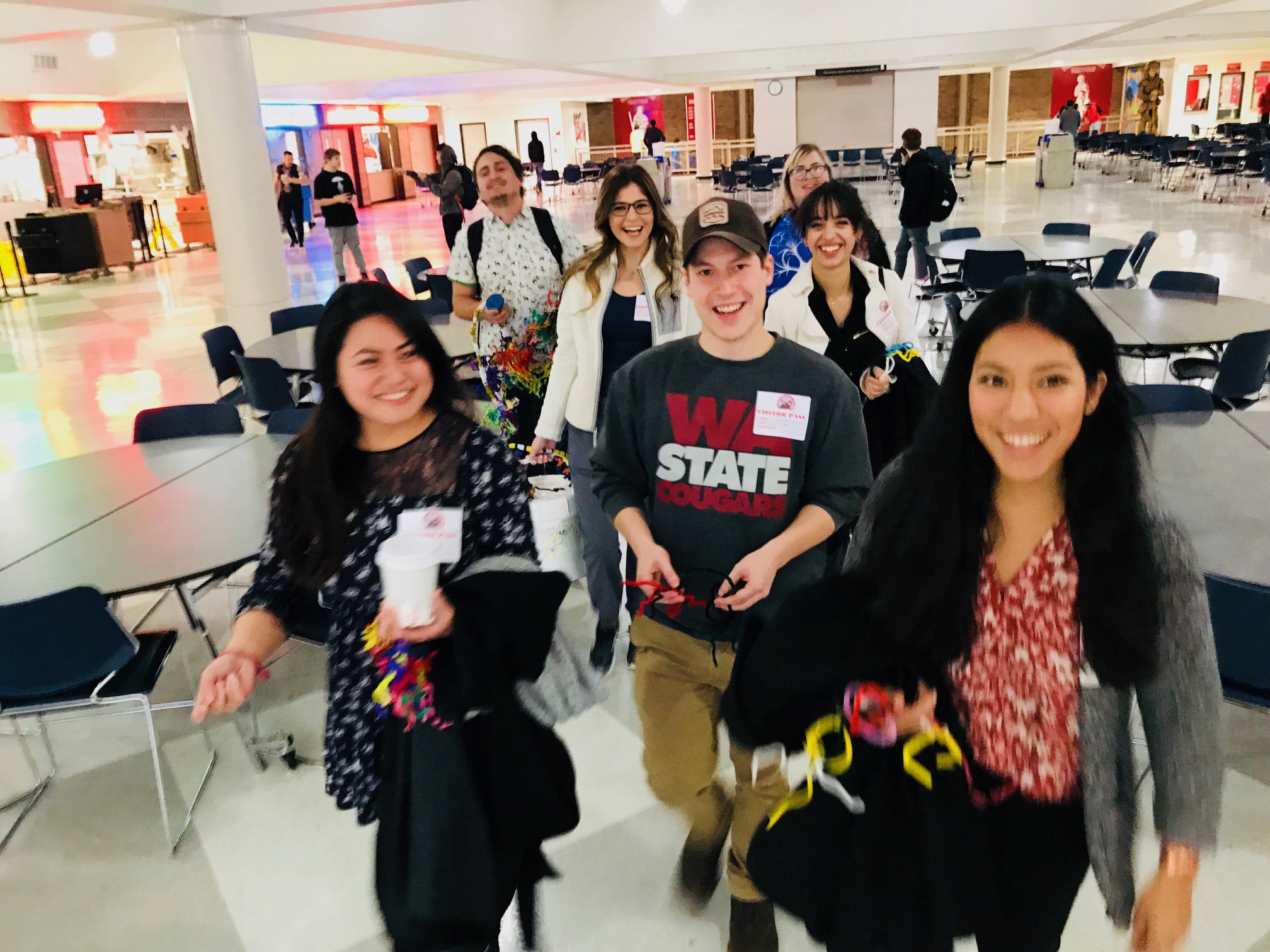
We had a strong contingent from nearby WSUV, the regional branch campus of Washington State University, which is sadly slashing arts programs to fund football and the salaries of 140+ administrators making more than the state Governor…
LEARN MORE: A Proposal to WSU President Kirk Schulz
LEARN MORE: WSU students balk at paying higher fees to balance athletic department budget
LEARN MORE: Prof, alum alarmed at WSU performing arts cuts
Undergraduates Ruth Marigomen (the Noggin Resource Council member for WSU), Saray Farias, Iris Gutierrez, Kateryna Bondarenko and Elsa Gomez enthusiastically joined us for the morning from nearby Salmon Creek, along with Sulema Rodriguez and Gaile Parker from Portland State University. Jordan Ray, also from PSU, and Joey Seuferling, our Resource Council member for hospitals and healthcare, presented human noggins to classrooms throughout the entire school day…

And these Fort classes start EARLY at 7:25am – an unhealthy hour for adolescent brains!
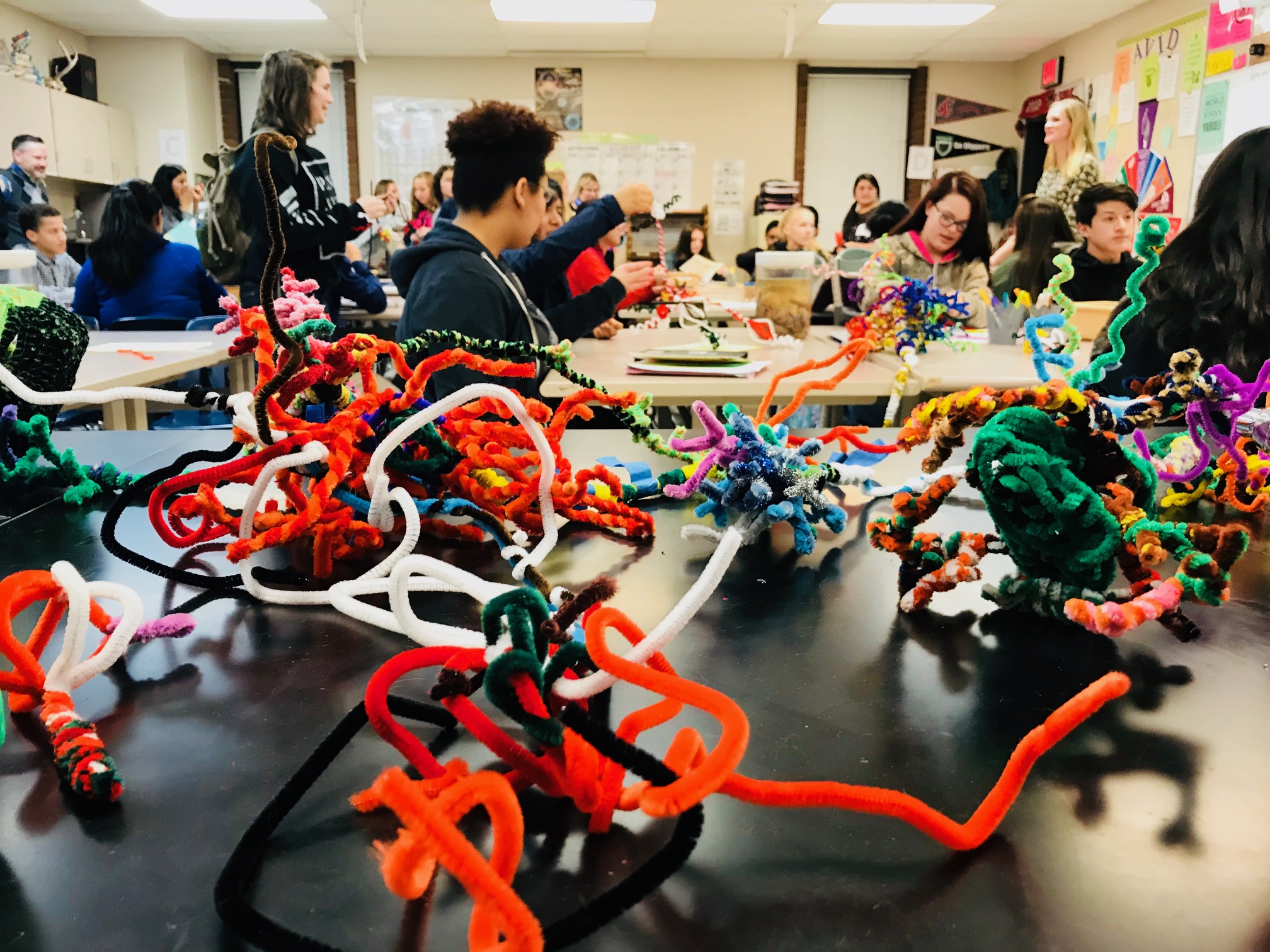
(We were pretty sleepy too!)
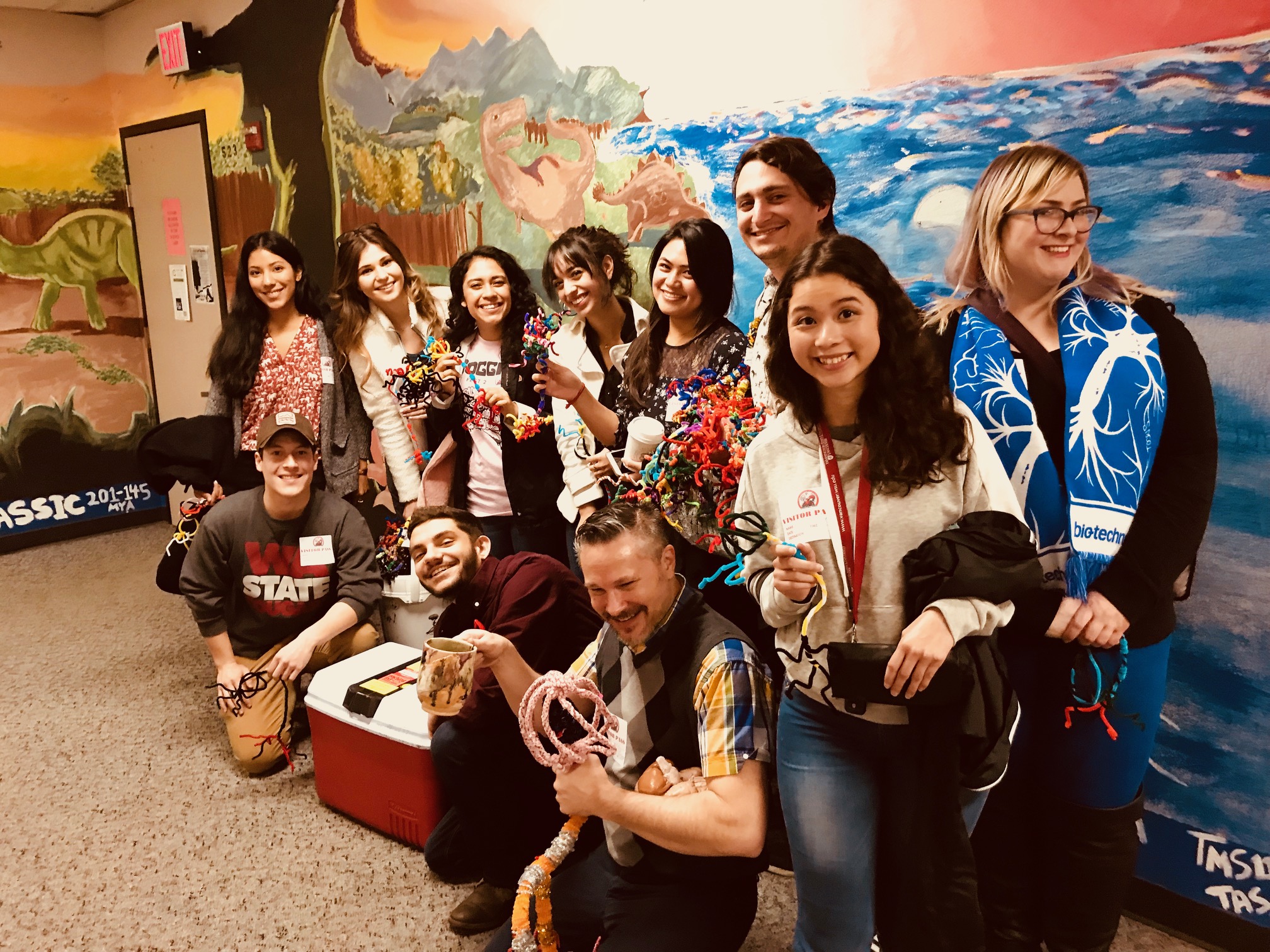
Teenagers naturally experience dramatic shifts in their circadian cycles as a normal component of development, staying up later and then sleeping late, and requiring a minimum of 8-9 hours of sleep each night…
LEARN MORE: Adolescent Changes in the Homeostatic and Circadian Regulation of Sleep
Waking a teenager up at 6:00am, as most parents will attest, is not easy and, according to sleep researcher Wendy Troxel, akin to waking an adult at 4:00am! You are incapable of functioning at 4:00am, and it is equally unreasonable to expect young people to thrive in high school in such unhealthy conditions. Schools with early start times have poorer academic outcomes, and a higher incidence of mental health disorders than those starting after 8:30am.
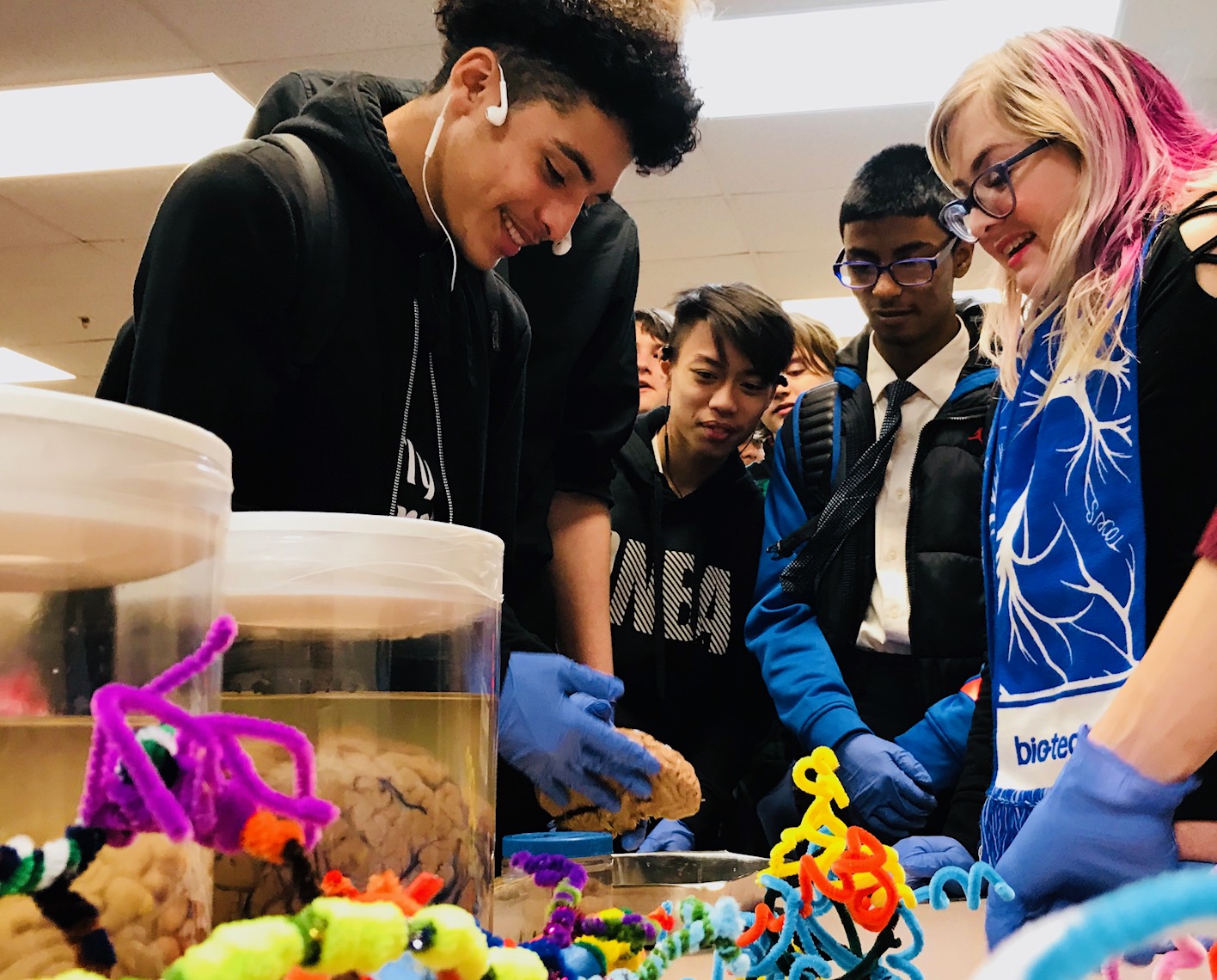
LEARN MORE: Sleep habits, academic performance, and the adolescent brain structure
LEARN MORE: School Start Times, Sleep, Behavioral, Health, and Academic Outcomes
LEARN MORE: Noggins in Nod
And, disturbingly, there are visible physical changes, notably less grey matter in the frontal lobes of sleep-deprived teenagers! From Urilla et al (2017): “These findings suggest that sleep habits…have an alarming link with both the structure of the adolescent brain and school performance.”
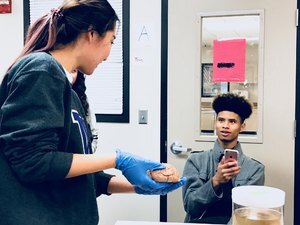
District policies mandating early classes are negatively impacting adolescent brain development, and classes should be delayed to reflect our understanding of the critical biological changes occurring during this important stage of life.
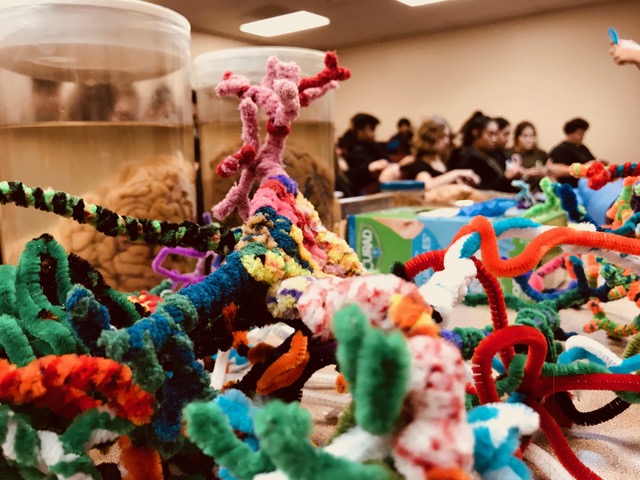
“These early school start times are just abusive.” – Mary Carskadon, Ph.D.
Research should inform policy. Teachers and students in Vancouver’s Evergreen School District have lobbied successfully for later start times, because of links between poor sleep and poor academic performance and an increased risk to mental health. Students at Fort seemed very eager to lobby on this issue too! We told them we’d put together a detailed post, with links, and encouraged them to organize, speak up, and get things changed…
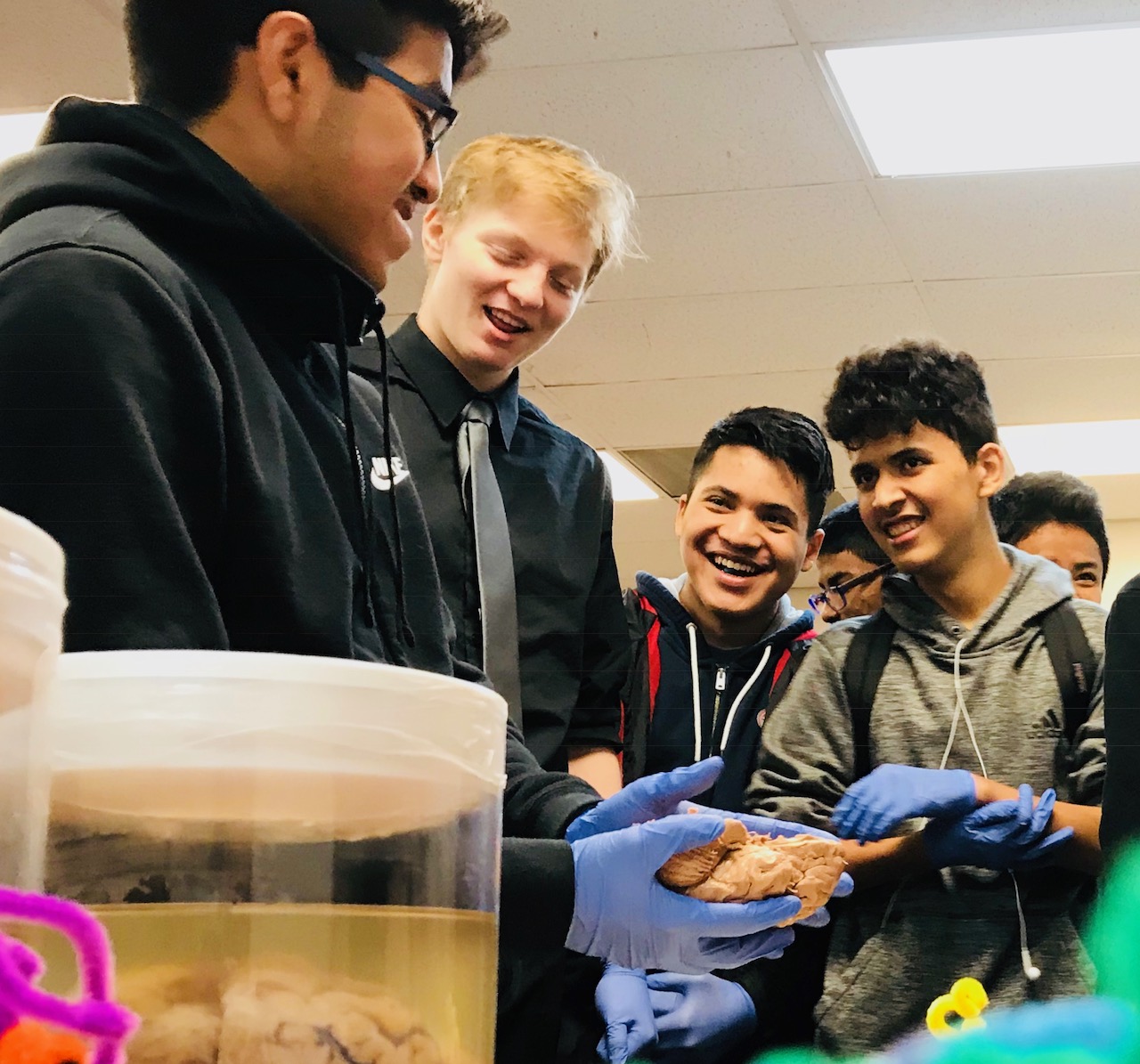
“When teens wake up earlier, it cuts off their dreams. We’re not giving them a chance to dream.”—Rafael Pelayo, M.D.
We also made lots of brain cells out of pipe cleaners (or fuzzy sticks?)!


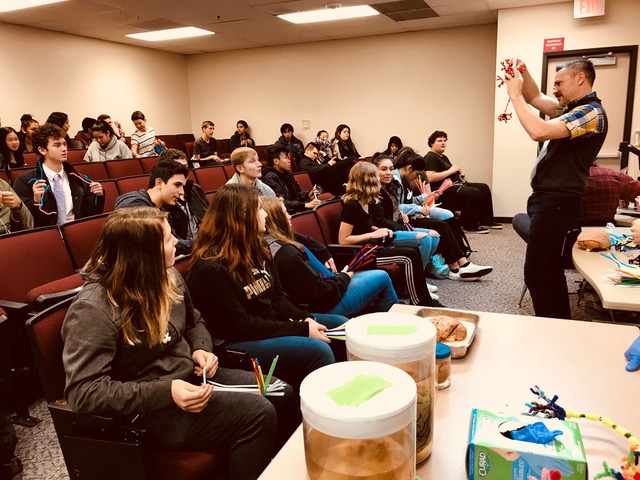
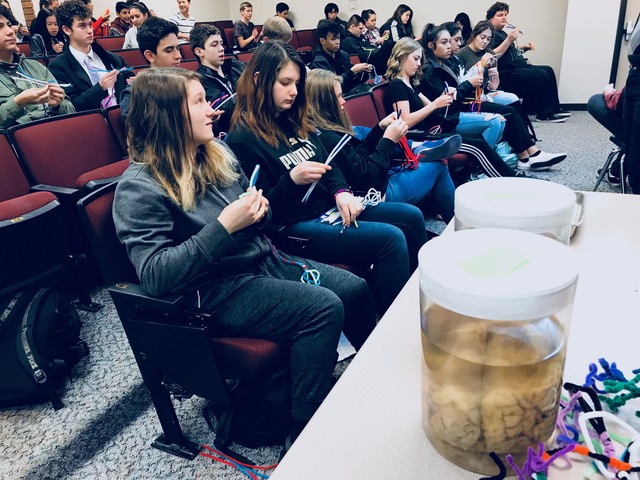
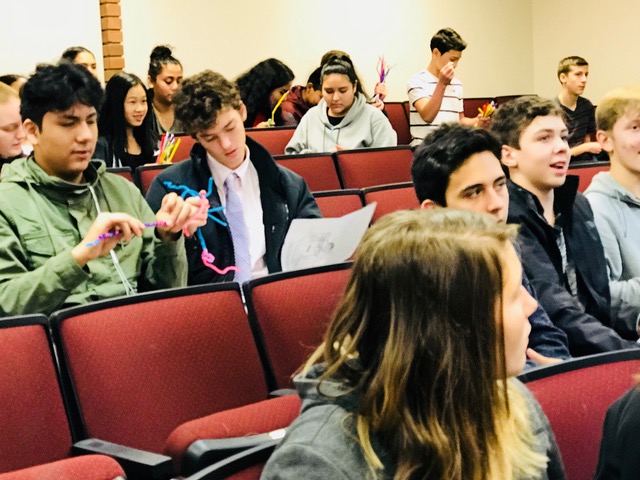
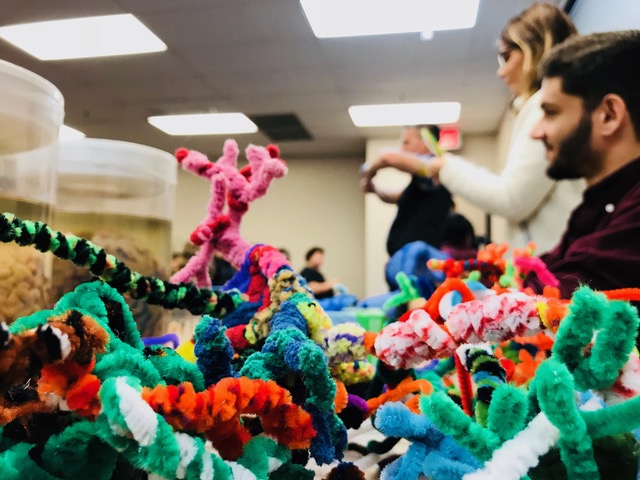
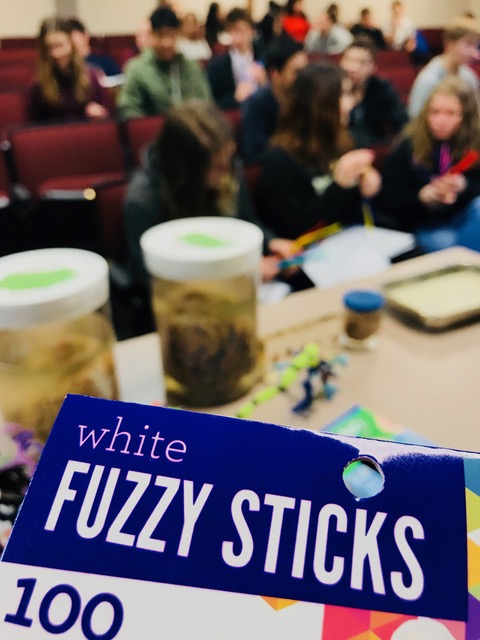
LEARN MORE: STEAM Art Projects
And looked at our donated brains up close…


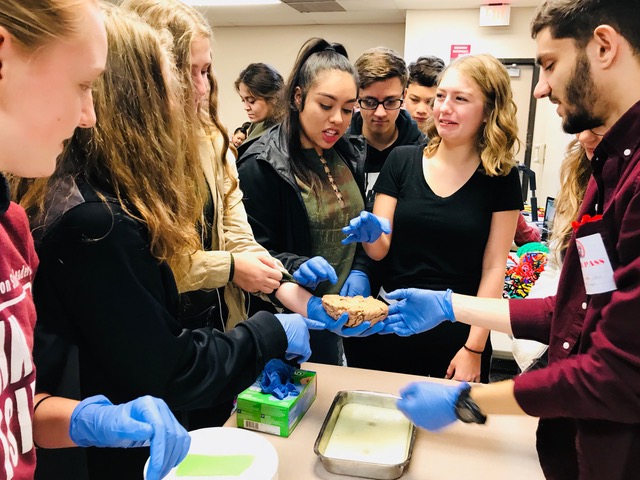

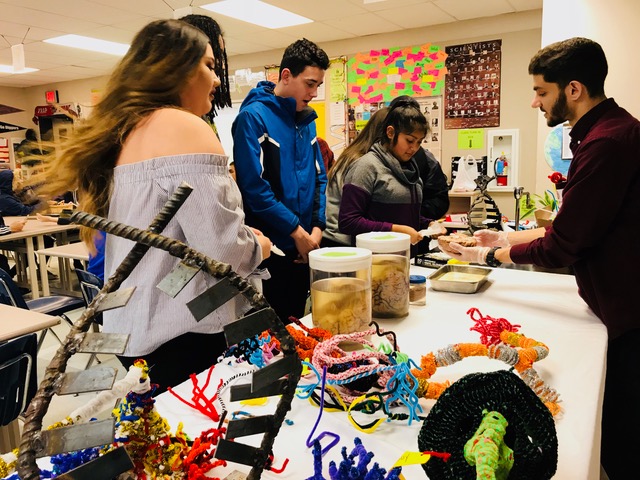
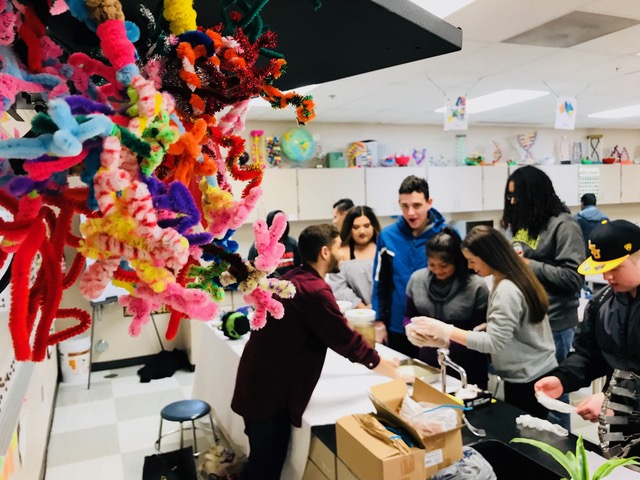
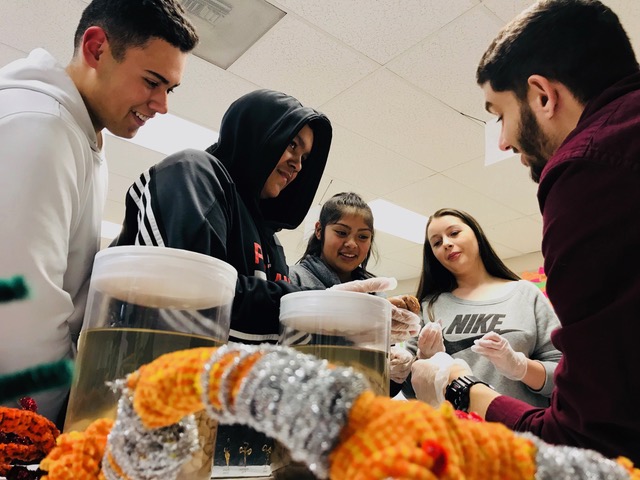

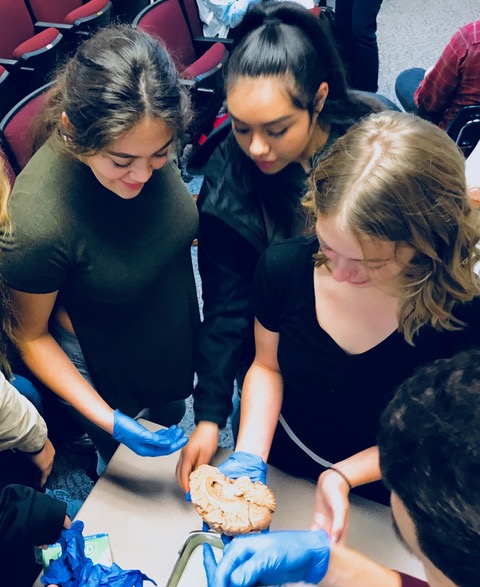
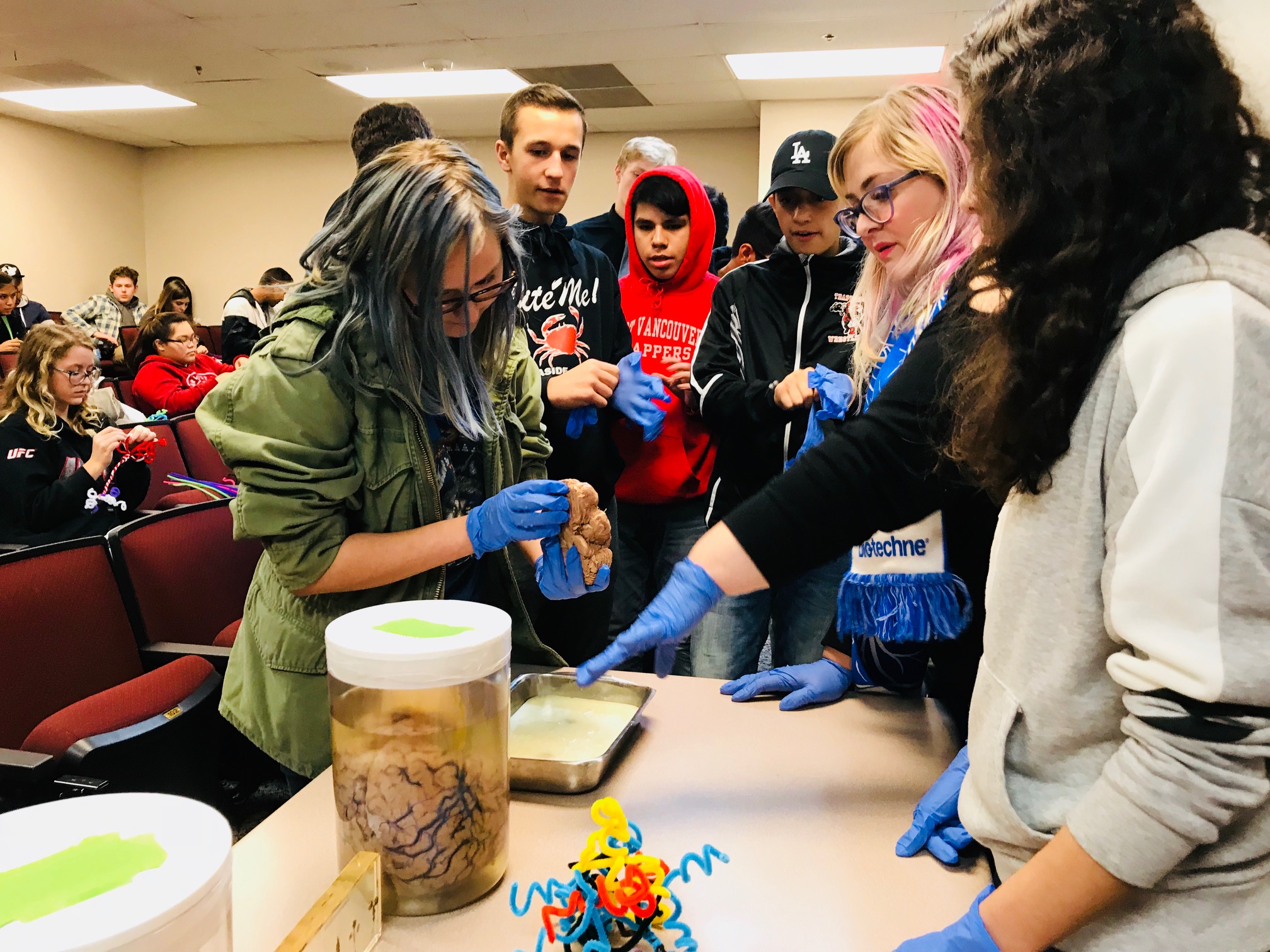
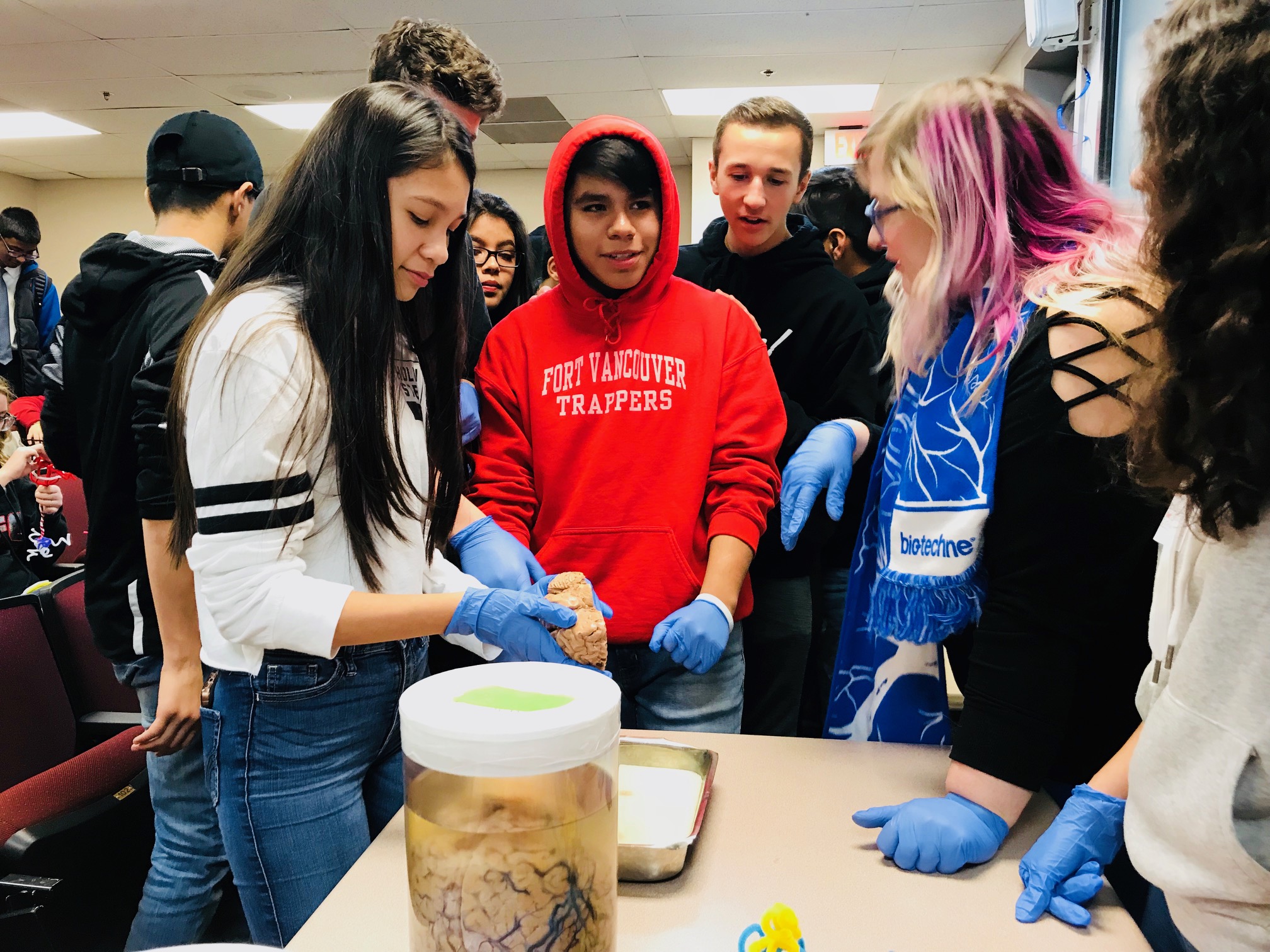
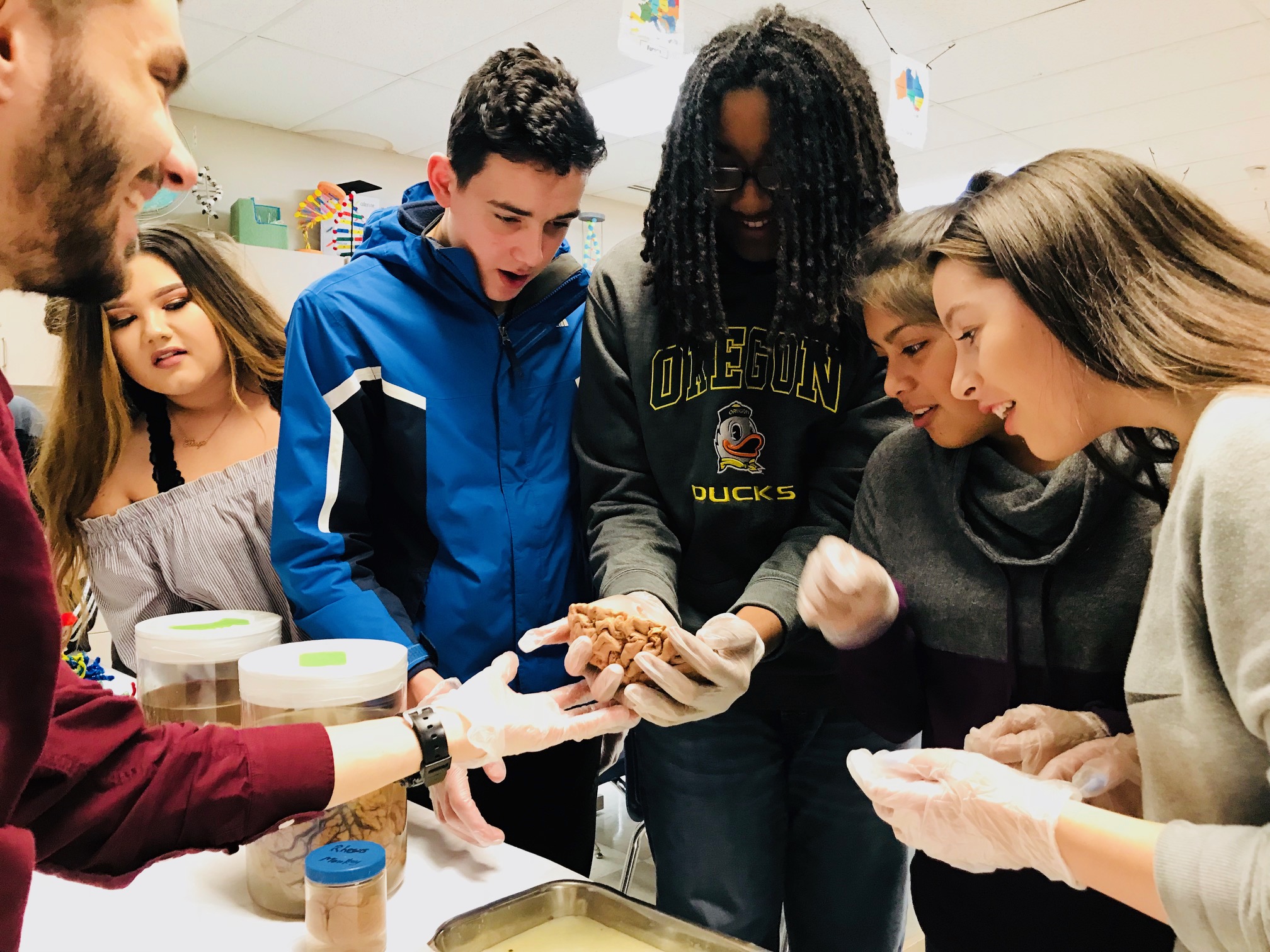
Jordan Ray from Portland State also field tested a special biofeedback project. In his own words…

“My biofeedback project started this summer while reading about the role of electrophysiology in research, specifically in sleep and stress studies. I recognized the great potential for electrophysiology data as a research tool for neuroanthropology and social psychology, where my interests lie, as a way to validate findings with a tangible biofeedback component. I believe a lot of great studies happen outside of the lab, in the field, where traditional equipment cannot go. From experience at a local fire department as a volunteer first responder, I knew that electrophysiology monitoring could be used in the field, as we used electrocardiograms (ECG) to analyze heart rhythms in patients on calls. I set out to see what the market looked like for portable electrophysiology monitoring equipment and was kind of surprised to find very little; everything was either very expensive, too large for field use, or not able to give raw data for analysis. If I couldn’t find a device that fit these needs, I decided would try and build one of my own.
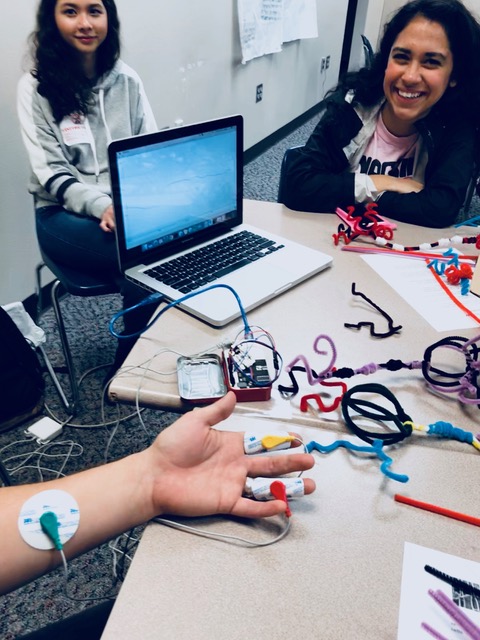
With little coding and electrical engineering experience, I began reading as much as I could on open source platforms for electrophysiology monitoring. Websites and online communities like Sourceforge.net provided a lot of help and inspiration for my designs. Hobbyists and students before me had built their own biofeedback equipment and provided a lot of inspiration for the project. Eventually I settled on an Arduino Uno r3 board as my microprocessor and found an analog amplifier unit from DFRobot to act as my primary amplifier for Electrocardiogram (ECG) and Galvanic Skin Response (GSR). Mk. 1 was born. After a little bit of work, I got my sensors working and giving me real time ECG and GSR data. Shortly after I bought a card reader/writer for the board so it could record voltage x time on an (x,y) plot for analysis in MatLab later. I now have Mk.1 interfacing with Android, providing me a way to monitor data while recording to the microSD card. Soon, I will get bluetooth working. I now have a circuit design finalized for the EEG component and look forward to getting that started soon.
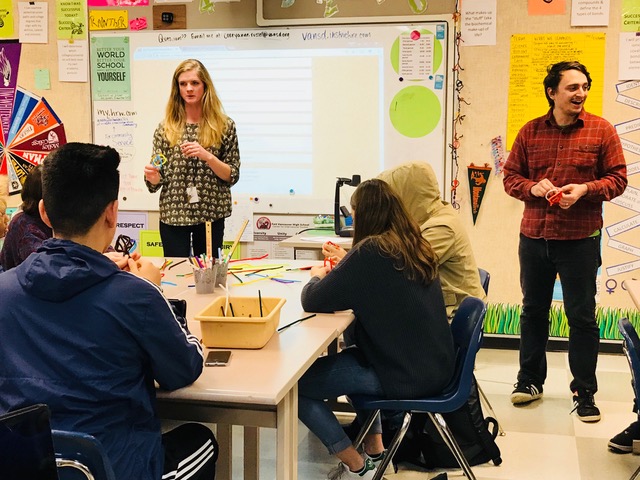
The ultimate goal is to have a sort of all-in-one biofeedback suite (ECG, EEG, GSR) that is bluetooth enabled and can record data anywhere, anytime. Mk. 1 will take its first excursion with me while I ride my motorcycle around Baja California for the next few weeks, recording my parasympathetic activity after rides as a sort of pilot study for the device.
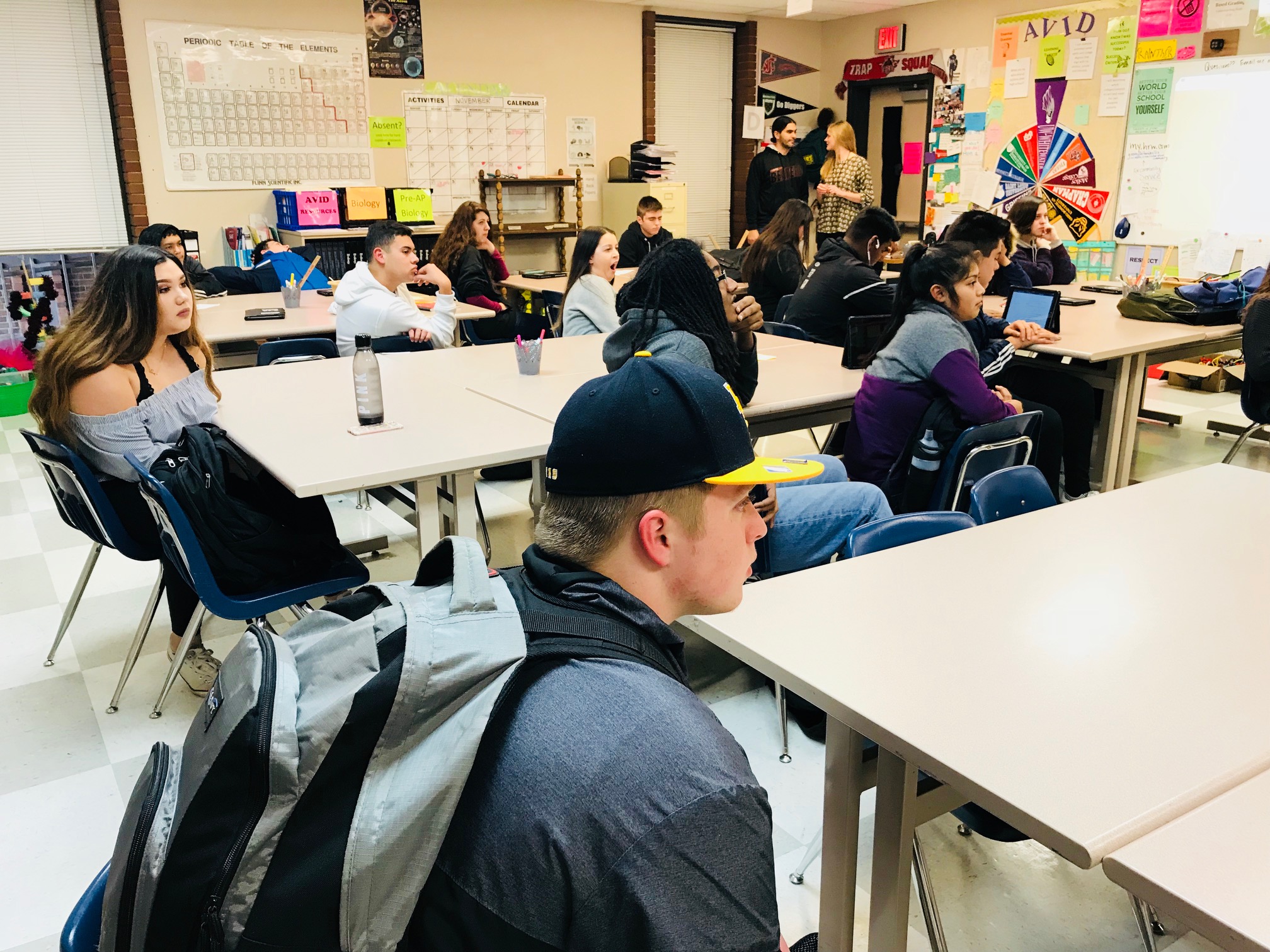
Last Tuesday, I had the great opportunity to take Mk. 1 to Fort Vancouver High School and demo it for some of the kids in the classroom during a Noggin visit. It was awesome to demonstrate the functionality of the device and demonstrate a little more about the electrical functions of the autonomic nervous system. However, I think what was more valuable was the reaction from the students when learning that all of this could be put together at home using commercially available products. So often public perception of research hides under the pretense that it must be conducted those with advanced degrees, in sterile, fluorescent-lit labs, far away from the reaches of a public classroom. The reality is the quite opposite; the time for community-based science is now. Kids in STEM programs nationwide are the ones we should be investing in so that they can learn more about conducting research. I am grateful for the great opportunity to volunteer with Noggin and I hope one day the devices I’m designing can be used extensively in the discovery of electrophysiology in the classroom, and beyond.”
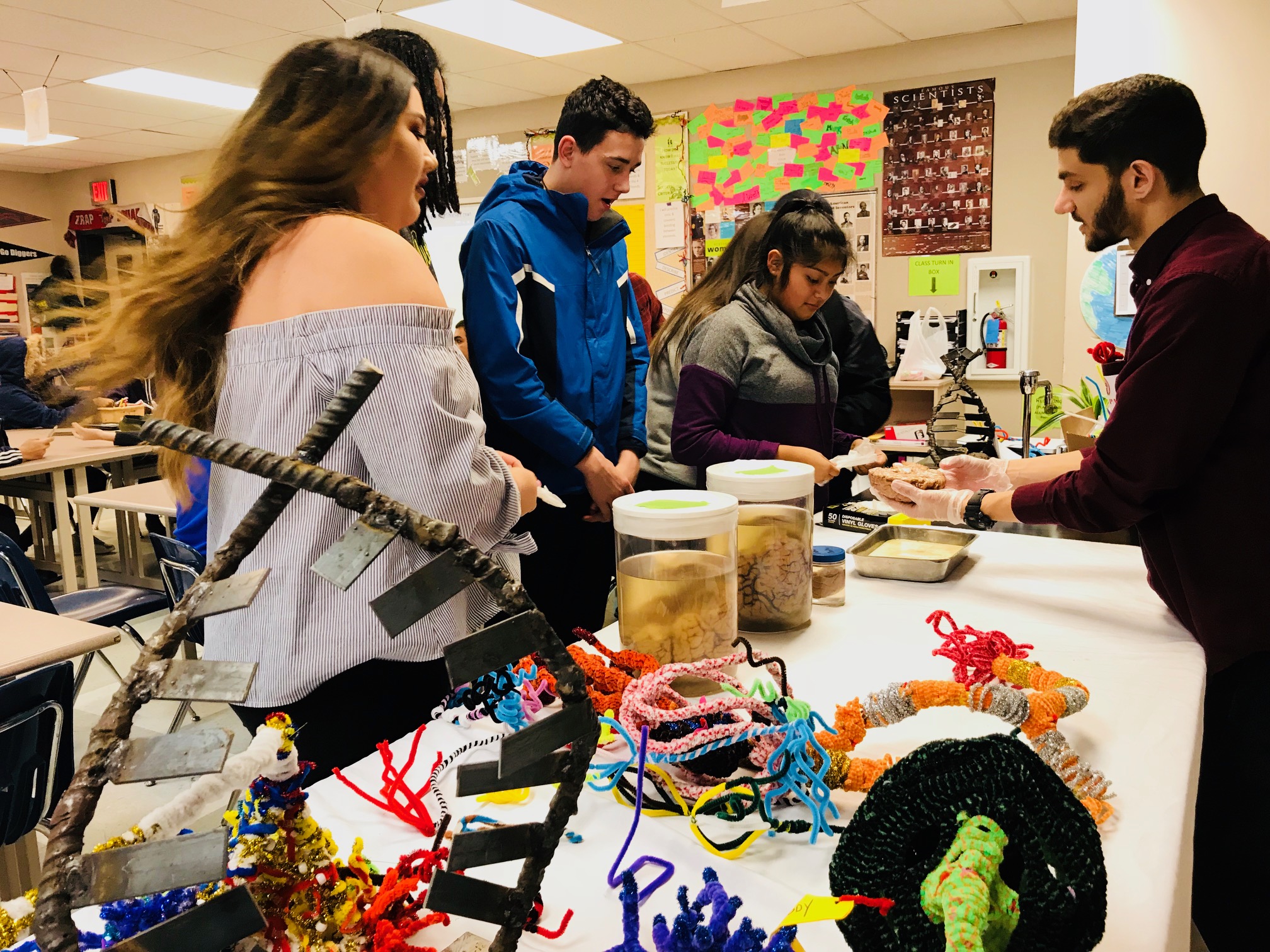
Many thanks to Jordan and all our Noggin volunteers, and the terrific teachers, staff and students at Fort Vancouver High! We’ll be back…perhaps after 8:30..?
